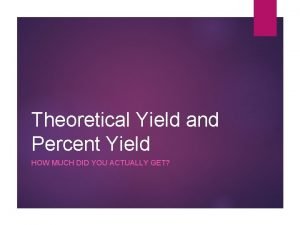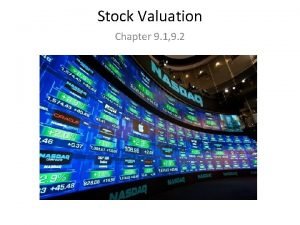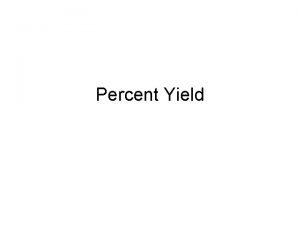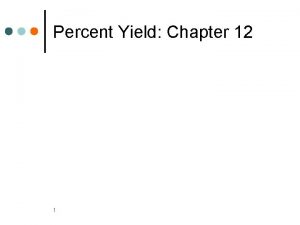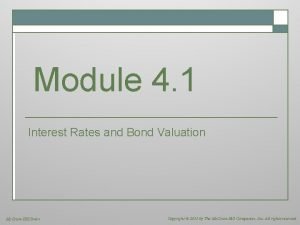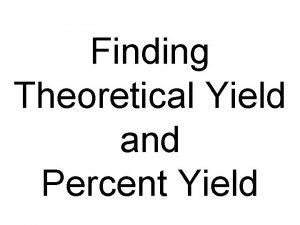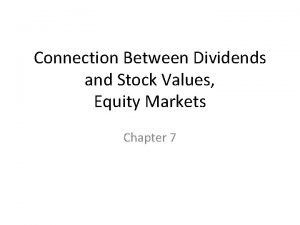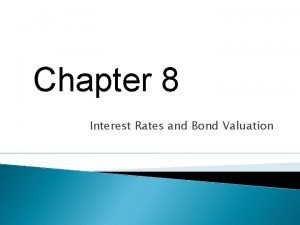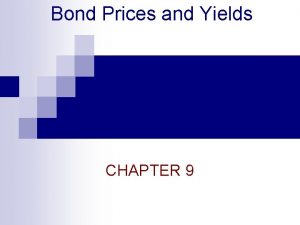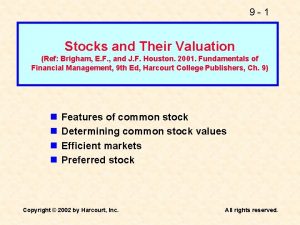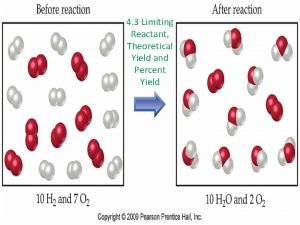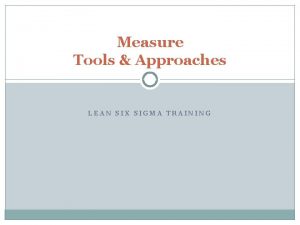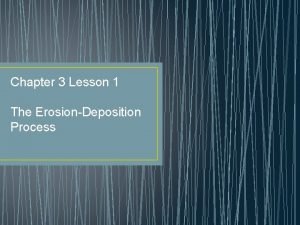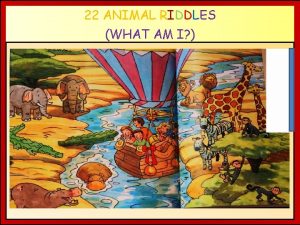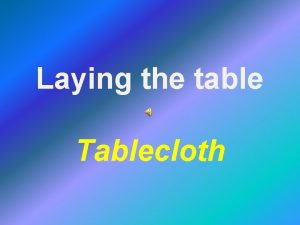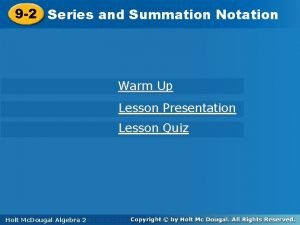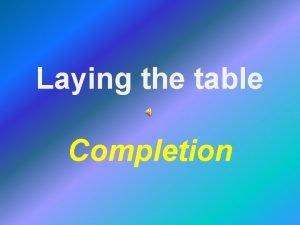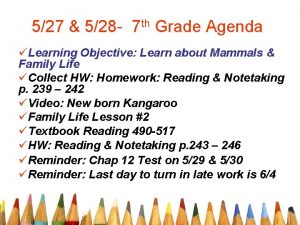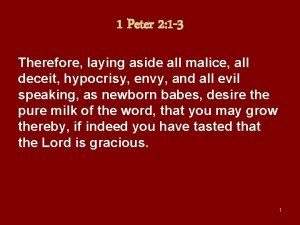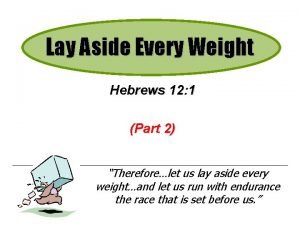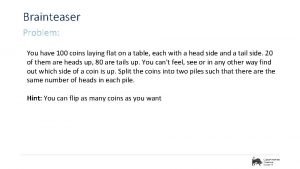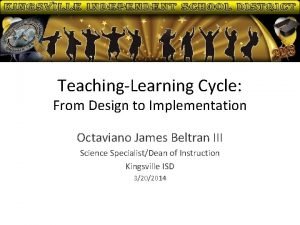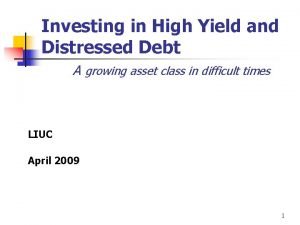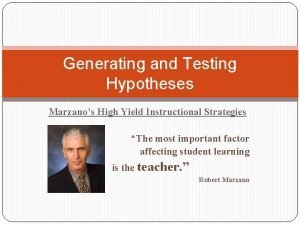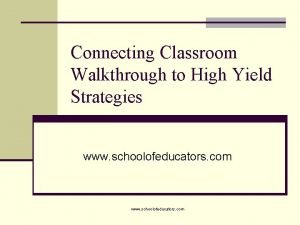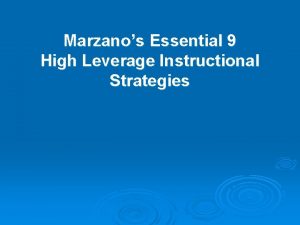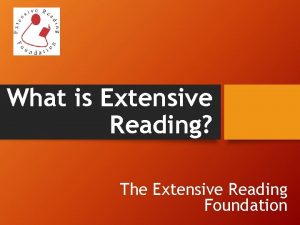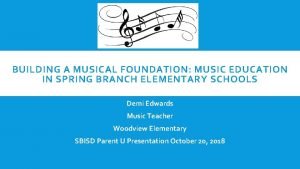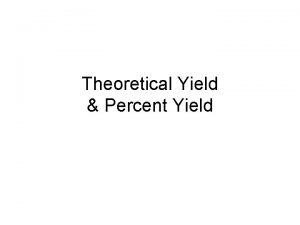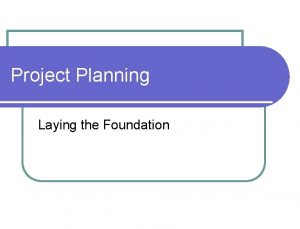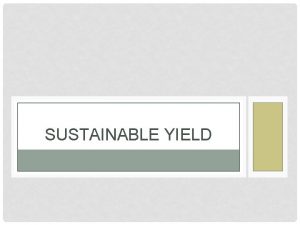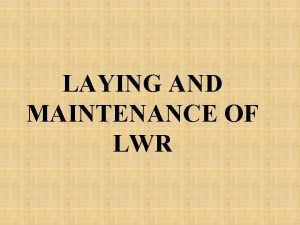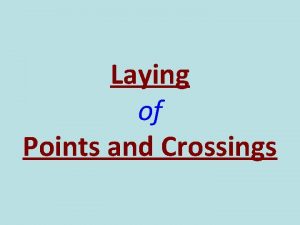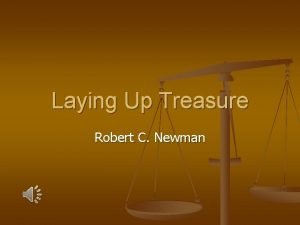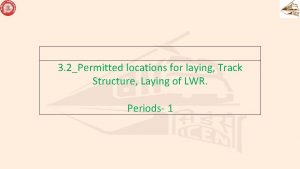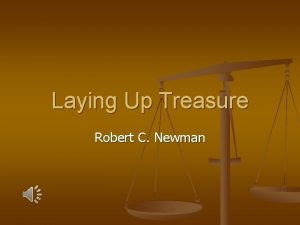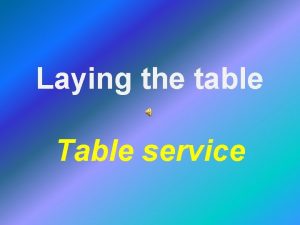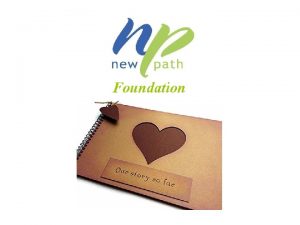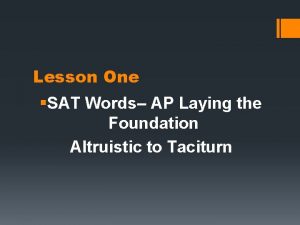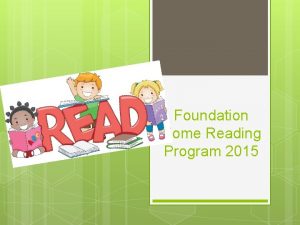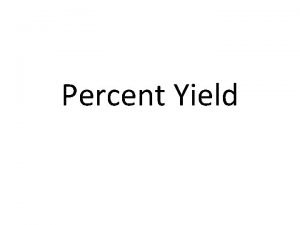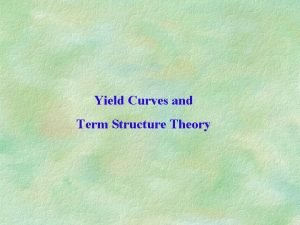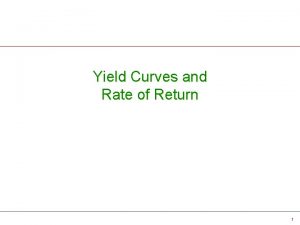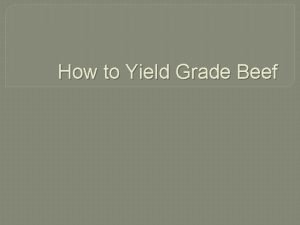Laying the Foundation for One High Yield Reading












































- Slides: 44

Laying the Foundation for One High Yield Reading Strategy: Close Reading

What Is Close Reading? The Partnership for Assessment of Readiness for College and Careers (PARCC) supplies clarification useful for teaching with Common Core standards in mind: Close, analytic reading stresses engaging with a text of sufficient complexity directly and examining meaning thoroughly and methodically, encouraging students to read and reread deliberately. Directing student attention on the text itself empowers students to understand the central ideas and key supporting details. It also enables students to reflect on the meanings of individual words and sentences; the order in which sentences unfold; and the development of ideas over the course of the text, which ultimately leads students to arrive at an understanding of the text as a whole. (PARCC, 2011, p. 7)

Why Close Reading Now? The standards based shift to teaching reading as a set of thinking strategies too often left readers with the notion that the text was simply a launching point for their musings, images that popped into their heads, and random questions that, in the end, did little to enhance their understanding of the text itself. So if responding personally to text isn't leading students to deeper understanding, then where should teachers turn to help students improve their comprehension? We should turn to the text itself.

Enter Close Reading Reread that PARCC definition of close reading— closely—to extract key concepts. You might identify these ideas: examining meaning thoroughly and analytically; directing attention to the text, central ideas, and supporting details; reflecting on meanings of individual words and sentences; and developing ideas over the course of the text. Notice that reader reflection is still integral to the process. But close reading goes beyond that: The best thinkers do monitor and assess their thinking, but in the context of processing the thinking of others (Paul & Elder, 2008)

Enter Close Reading Reread that PARCC definition of close reading— closely—to extract key concepts. You might identify these ideas: examining meaning thoroughly and analytically; directing attention to the text, central ideas, and supporting details; reflecting on meanings of individual words and sentences; and developing ideas over the course of the text. Notice that reader reflection is still integral to the process. But close reading goes beyond that: The best thinkers do monitor and assess their thinking, but in the context of processing the thinking of others (Paul & Elder, 2008)

Three Strategies 1. Use Short Texts 2. Aim for Independence Go Beyond "Ho-Hum" Question Teach Students to Ask the Questions a) b) c) d) e) f) g) h) i) j) k) l) m) Who is speaking in the passage? Who seems to be the main audience? (To whom is the narrator speaking? ) What is the first thing that jumps out at me? Why? What's the next thing I notice? Are these two things connected? How? Do they seem to be saying different things? What seems important here? Why? What does the author mean by ______? What exact words lead me to this meaning? Is the author trying to convince me of something? What? How do I know? Is there something missing from this passage that I expected to find? Why might the author have left this out? Is there anything that could have been explained more thoroughly for greater clarity? Is there a message or main idea? What in the text led me to this conclusion? How does this sentence/passage fit into the text as a whole? 3. Focus on Observing and Analyzing

Framing Questions the connotative and denotative meanings of words the impact of words repetition of words and phrases figures of speech sentences and their structure paragraphs and their structure imagery logic of presentation or argument strategies of presentation or argument point of view multiple perspectives

Framing Questions audience strategic silences the author’s intent (to the extent we can discern it) historical context setting theme or central idea organization and arrangement of ideas tone inferences implications evidence

• Getting students to ask themselves the four general questions and the more specific questions about content and craft is a long-term goal. • If we want to create close readers who are also independent readers, we need to explicitly teach how to approach a text to uncover its multiple layers of meaning. • In the meantime, we'll need to come to class prepared to ask important text-dependent questions when students' own questioning fails to produce a deep understanding. • But those questions need to be more than "text-dependent"; they need to represent the full range of the Common Core standards. • College and career readiness begins in the primary grades. With the right tools, we can build close reading skills even with our youngest or our least savvy readers.

• What seems important here? Why? • What does the author mean by ______? What exact words lead me to this meaning? • Is the author trying to convince me of something? What? How do I know? • Is there something missing from this passage that I expected to find? Why might the author have left this out? • Is there anything that could have been explained more thoroughly for greater clarity? • Is there a message or main idea? What in the text led me to this conclusion? • How does this sentence/passage fit into the text as a whole In order to “digest” what you read, you must think about it! Close Reading l This is a type of analytical reading. l. The reader looks at details, words and images and assesses their importance. l The reader makes guesses about the meaning of the text as they read. l Close readers look beyond the plot for deeper layers of meaning.

The Scarlet Letter – “The Prison Door” l Thoroughly read the handout and annotate it using the strategies on the next two slides,

Annotation 1. In groups divide the task- verbs or adjectives (30 seconds) 2. Read through the text 1 time annotating for verbs or adjectives (4 minutes) 3. Individually note patterns, contrasts, and relationships (1 minute) 4. Turn and Talk- share significant observations and chose 1 to share out (2 minutes) 5. Spokesperson for each group share (30 seconds each)

2 nd Annotation 1. Individually read annotate for strong images and questions (4 minutes) 2. Turn and Talk- share significant observations and chose 1 to share out (2 minutes) 3. Spokesperson for each group share (30 seconds each) 4. Discuss implementation of annotation in your classroom (2 minutes) 5. Group share (2 minutes)

l “The Prison Door” from The Scarlet Letter A THRONG of bearded men, in sad-colored garments and gray, steeple-crowned hats, intermixed with women, some wearing hoods, and others bareheaded, was assembled in front of a wooden edifice, the door of which was heavily timbered with oak, and studded with iron spikes. The founders of a new colony, whatever Utopia of human virtue and happiness they might originally project, have invariably recognized it among their earliest practical necessities to allot a portion of the virgin soil as a cemetery, and another portion as the site of a prison. In accordance with this rule, it may safely be assumed that the forefathers of Boston had built the first prison-house, somewhere in the vicinity of Cornhill, almost as seasonably as they marked out the first burial-ground, on Isaac Johnson’s lot, and round about his grave, which subsequently became the nucleus of all the congregated sepulchres in the old church-yard of King’s Chapel. Certain it is, that, some fifteen or twenty years after the settlement of the town, the wooden jail was already marked with weather-stains and other indications of age, which gave a yet darker aspect to its beetle-browed and gloomy front. The rust on the ponderous iron-work of its oaken door looked more antique than any thing else in the new world. Like all that pertains to crime, it seemed never to have known a youthful era. Before this ugly edifice, and between it and the wheel-track of the street, was a grass-plot, much overgrown with burdock, pig-weed, apple-peru, and such unsightly vegetation, which evidently found something congenial in the soil that had so early borne the black flower of civilized society, a prison. But, on one side of the portal, and rooted almost at the threshold, was a wild rose-bush, covered, in this month of June, with its delicate gems, which might be imagined to offer their fragrance and fragile beauty to the prisoner as he went in, and to the condemned criminal as he came forth to his doom, in token that the deep heart of Nature could pity and be kind to him. This rose-bush, by a strange chance, has been kept alive in history; but whether it had merely survived out of the stern old wilderness, so long after the fall of the gigantic pines and oaks that originally overshadowed it, —or whether, as there is fair authority for believing, it had sprung up under the footsteps of the sainted Ann Hutchinson, as she entered the prison-door, —we shall not take upon us to determine. Finding it so directly on the threshold of our narrative, which is now about to issue from that inauspicious portal, we could hardly do otherwise than pluck one of its flowers and present it to the reader. It may serve, let us hope, to symbolize some sweet moral blossom, that may be found along the track, or relieve the darkening close of a tale of human frailty and sorrow.

Close Reading Strategies A THRONG of bearded men, in sad-colored garments and gray, steeple -crowned hats, intermixed with women, some wearing hoods, and others bareheaded, was assembled in front of a wooden edifice, the door of which was heavily timbered with oak, and studded with iron spikes. Identify the words that catch the eye, that convey impressions to the senses, or that represent actions and movement. Identify words that have similar connotations. Identify words that set up oppositions. **Notice the sentence structure: what is the subject; where is the verb. **Notice the distance between them. **Note the two “color” verbs: the throng is “assembled” and the door is “timbered. ”

Close Reading Strategies A THRONG of bearded men, in sad-colored garments and gray, steeple -crowned hats, intermixed with women, some wearing hoods, and others bareheaded, was assembled in front of a wooden edifice, the door of which was heavily timbered with oak, and studded with iron spikes. What does this scene, set before a prison, suggest about the place of law in Salem? What kind of culture is being described? What tensions might be inferred? What are the larger implications for The Scarlet Letter? Understanding In his opening sentence, through the use of heavily connotative and descriptive language, Hawthorne characterizes the society of Salem as grim, patriarchal, and oppressive and introduces a key theme of the novel by suggesting a tension between freedom and authority in Salem.

Possible Extensions q Annotate for another purpose, dictated by the text q Craft Dialectical Journal entries q Extend into literary analysis q Three Levels of Reading strategy q Categorize questions according to Levels of Thinking

Some Guiding Questions Hawthorne establishes a contrast between the darkness of the Puritans and the beauty of the rose. Examine the descriptions of the Puritans, the prison, and the prison door. l What does Hawthorne imply about the nature of human beings by his emphasis on the early establishment of a prison and a cemetery in this new American colony? l What does the ancient wood door (in this colony only twenty years old) symbolize? l What is signified by the description of the weeds? The rose? l Ann Hutchinson was a Quaker who maintained her right to her own conscience. What is Hawthorne’s attitude toward her? How does he connect her to Hester? l What effect is created by Hawthorne’s inclusion of historical references? l What is the time and place of this opening scene? l What connection is there between the rose and the scarlet letter?

Techniques Craft Technique Imagery including comparisons: • Similes • Metaphors • Personification • Figurative language • Symbols Possible Questions What is being compared? Why is the comparison effective? (typically because of the clear, strong, or unusual connection between the two) What symbols are present? Why did the author choose these symbols?

Techniques Craft Technique Possible Questions Word choice • What word(s) stand out? Why? (typically vivid words, unusual choices, or a contrast to what a reader expects) • How do particular words get us to look at characters or events in a particular way? Do they evoke an emotion? • Did the author use nonstandard English or words in another language? Why? What is the effect? • Are there any words that could have more than one meaning? Why might the author have played with language in this way?

Techniques Craft Technique Possible Questions Tone and voice • What one word describes the tone? • Is the voice formal or informal? If it seems informal, how did the author make it that way? If it's formal, what makes it formal? • Does the voice seem appropriate for the content?

Craft Techniques Sentence structure • Short sentence • Long sentences • Sentence fragments • Sentences in which word order is important • Questions Possible Questions • What stands out about the way this sentence is written? • Why did the author choose a short sentence here? (for example, so it stands out from sentences around it, for emphasis) • Why did the author make this sentence really long? (for example, to convey the "on and on" sense of the experience. ) • Why did the author write a fragment here? (for example, for emphasis or to show a character's thoughts) • Based on the order of the words in this sentence, which word do you think is the most important? Why? What was the author trying to show by placing a particular word in a certain place?

Level Creating Thinking What would it be like if…? Create, develop, generate, produce, imagine THEMATIC Evaluating Why do you think that…? Conclude, debate, justify, judge, assess Analyzing What other ways could…? categorize, dissect, examine, compare, contrast INFERENTIAL Applying How would you solve…? apply, demonstrate, implement, practice Understanding What is the main idea of…? describe, explain, paraphrase, retell LITERAL Remembering Who, What, When, Where…? cite, define, find, list

The Three Levels of Reading

3 Levels of Reading on the Line (Literal) Reading Between the Lines (Inferential) Reading Beyond the Lines (Thematic)

First Level of Reading Literal READING ON THE LINE Understanding & Remembering l Find meaning directly in the text l Mentally answer the questions “Who? ” “What? ” “When? ” and “Where? ” l

Second Level of Reading Inferential READING ________ BETWEEN THE ________ LINES Applying & Analyzing l Readers interpret what is in the text l Key concerns are : -What does the passage represent, suggest, or personify? -What does a certain allusion or metaphor mean? - You are analyzing, interpreting, classifying, comparing, contrasting and finding patterns. l

Third Level of Reading Thematic READING BEYOND THE LINES ___________________ l Evaluating & Creating l Readers move beyond the text to connect literature to their own experiences as well as with universal meaning.

Reading Beyond the Lines (continued) l - - - Ask: “How does this text connect with my life? ” “How does it connect to life for all people? ” “How does it connect with my ideas about morality or values? ” What perceptions about life in general is the author communicating to me? ” “What do I think of these perceptions? ”

1 READING ON THE LINES 2 READING BETWEEN THE LINES 3 READING BEYOND THE LINES 1 Literal 2 erential Inf 3 Thematic

Remember and Understand Reading on the Line 1. Write the most significant word from the text. 2. Quote the entire sentence in which the word appears. Cite the source of the quotation in parentheses. 3. Write multiple dictionary definitions of the word (denotation). 4. Explain why the word is important to the meaning of the work by placing it in the context of the narrative.

Applying and Analyzing R *Draw & Explain Reading Between the Lines 1. Referring to the text, draw FOUR images created from the text *Draw & Explain Reading On the Line *Draw & Explain 2. Write an explanation of the link between the four images from the text and the word you have written in the innermost circle. *Draw & Explain

Evaluating And Creating Reading Beyond the Lines Reading Between the Lines Reading On the Lines Write TWO thematic statements drawn from the significant word you wrote in the innermost circle and the images you drew in the middle circle. These should be universal thematic statements.

Levels of Reading 1. In groups divide up the tasks- Who will complete each level? (1 minute) 2. Discuss mental draft of your poster- What are you going to put at each level? (5 minutes) 3. Complete your representation of the Three Levels of Reading. (20 minutes) 4. Gallery Walk using post-its for commentary or observations (5 minutes) 5. Review commentary and reflect on strategy. (3 minutes) 6. Whole group share one piece of poster, one comment and one reflection on implementing the strategy. (1 minute)

Possible Extensions q. Craft Dialectical Journal entries. q. Extend into literary analysis.

What is a Dialectical Journal?

l “Dialectical” relates to the process of logical discussion used to determine the truth. l A dialectical journal is your record of your thoughts as you read–your search for the truth. l As a good reader, you question what you read, holding it up against what you already know. l Your dialectical journal is your opportunity to show others how you think as you read.

Dialectic Journal Level of Reading Literal/Concrete (Quote) Inferential/Abstract Thematic Ideas What does it mean? What does it represent? How can you connect it?

Sample Dialectical Journal – The Scarlet Letter “The Prison Door” Quotation Response “On one side of the portal, and rooted almost at the threshold, was a wild rose bush, covered, in this month of June, with its delicate gems, which might be imagined to offer their fragrance and fragile beauty to the prisoner as he went in, and to the condemned criminal as he came forth to his doom, in token that the deep heart of Nature could pity and be kind to him” (Hawthorne 35). The rose bush is a symbol of nature and stands in stark contrast to the prison door. (L) It sets the only beauty found in a gloomy mood of the first chapter, as if what is inside the prison will stand as a contrast to the dark-garmented Puritans who stand next to the door. (I) The use of Nature as a duality is obvious as the bush is wild and delicate, fragile and offers pity upon a sinner or criminal in Puritan society, who is wild with a delicate spirit. But nature is also just as dark as is seen with the great calamity of fire, famine, flood, etc. (T)

Index Card Feedback Individually create a dialectical journal entry based on the strategies explored today. Observation Reflection

Sample Dialectical Journal Sally Student Teacher ELA 11 17 May 2012 Dialectical Journal – 1984 Quotation p. 270 “‘And you consider yourself morally superior to us, with our lies and our cruelty? ’ ‘Yes, I consider myself superior. ’ …It was a sound track of the conversation he had with O’Brien, on the night when he had enrolled himself in the Brotherhood…” Response Who decides what’s right and what’s wrong? Winston thinks he’s better than the Party because he isn’t cruel and doesn’t lie, yet he pledged to do whatever it took to bring down the Party. Is he right because he has good reasoning, or is he just as wrong because of the things he is willing to do in the name of the greater good? I’m sure some villains have perfectly sound reasoning and worthy causes, but they’re bad because they wreak havoc and cause harm. We can say that a person is good because they have positive goals, but what if they reach those goals by putting others at risk? Are they still a good person, or a bad person? Do the means or the ends determine right or wrong?

Sam Student Teacher ELA 11 September 25, 2012 “The Scarlet Ibis” Dialectical Journal C- Concrete – Literal A- Abstract - Inferential T - Thematic Summary Paragraph 1 - Speaking in past tense, the narrator describes the time of year and other elements of the setting when the ibis landed in a tree in his yard. Observations and Questions What is the “clove of seasons”? (A) The narrator repeatedly uses words and images that indicate death and loss. (T) What is the “bleeding tree”? (A) Lots of imagery and figurative language (C) Did someone die? Who? When? What was the relationship to the narrator? (C) Do certain images remind us of the past? (T) Do people ever completely recover from the death of a loved one? (T)

Sam Student Teacher ELA 1 September 25, 2012 “The Scarlet Ibis” Dialectical Journal Doodle Evidence (quotation or detail and context) Quotation: “His eyes were round with wonder as he gazed about him, and his little hands began to stroke the rubber grass. Then he began to cry” (Hurst 191). Context: Doodle’s brother has taken him to a beautiful place. Quotation: “My lies were scary, involved, and usually pointless, but Doodle’s were twice as crazy. People in his stories all had wings and flew wherever they wanted to go (Hurst 193). Context: to help pass the time, Doodle and his brother make up stories. Inference or Interpretation – Commentary Sensitive, appreciative – Doodle reacts emotionally to the wonder of nature, moved to tears of joy at the beauty of simple things. He is attuned to nature and in awe of beauty. Imaginative, dreamer – Doodle’s fantasies reveal his vivid imagination as well as his desire to be able to move freely and easily. Through his imagination he can escape the physical handicaps that hold him down in real life.

REFERENCES l l l Boyles, N. (2012). Educational Leadership: Common Core: Now What? : Closing in on Close Reading. 70: 4 ASCD, Dec. -Jan. 2012. Web. 10 June 2014. 36 -41 Coleman, D. , & Pimentel, S. (2012). Revised publishers' criteria for the Common Core State Standards in English Language Arts and Literacy, grades 3– 12. Retrieved from Student Achievement Partners at www. achievethecore. org/stealthesetools Close Reading (2011). Retrieved from FRPS Professional Development - professionaldev. cfm National Assessment Governing Board. (2002). Reading Framework for the 2003 National Assessment of Educational Progress (Appendix A). Washington, DC: Author. Partnership for Assessment of Readiness for College and Careers. (2011). PARCC model content frameworks: English language arts/literacy grades 3– 11. Retrieved fromwww. parcconline. org/sites/parcc/files/PARCCMCFELALiteracy. August 2 012_FINAL. pdf Paul, R. , & Elder, L. (2008). How to read a paragraph: The art of close reading. Dillon Beach, CA: Foundation for Critical Thinking Press.
 Theoretical yeild
Theoretical yeild Quality culture
Quality culture Dividend yield and capital gains yield
Dividend yield and capital gains yield Difference between actual yield and theoretical yield
Difference between actual yield and theoretical yield Difference between actual yield and theoretical yield
Difference between actual yield and theoretical yield Current yield vs yield to maturity
Current yield vs yield to maturity Theoretical yield vs actual yield
Theoretical yield vs actual yield How to calculate dividend growth rate
How to calculate dividend growth rate Pure discount bond
Pure discount bond Current yield ytm
Current yield ytm Dividend yield and capital gains yield
Dividend yield and capital gains yield How to calculate percent yield
How to calculate percent yield Rolled throughput yield vs first pass yield
Rolled throughput yield vs first pass yield Pre reading while reading and post reading activities
Pre reading while reading and post reading activities The erosion-deposition process
The erosion-deposition process I am hairy i like cheese and; i can chew on your things
I am hairy i like cheese and; i can chew on your things Periodic table tablecloth
Periodic table tablecloth Summation formulas
Summation formulas Laying on table
Laying on table Egg laying animals
Egg laying animals Laying aside all malice
Laying aside all malice Every weight
Every weight Canyouunit
Canyouunit Pad foundation section
Pad foundation section Foundation standard 1 academic foundation
Foundation standard 1 academic foundation Marzano high yield strategies
Marzano high yield strategies High yield vs distressed debt
High yield vs distressed debt Generating and testing hypotheses marzano
Generating and testing hypotheses marzano Marzano's high yield strategies
Marzano's high yield strategies Kca deutag investor relations
Kca deutag investor relations Marzanos 9
Marzanos 9 One god one empire one religion
One god one empire one religion One one one little dog run
One one one little dog run One king one law one faith
One king one law one faith One empire one god one emperor
One empire one god one emperor Ford one plan
Ford one plan See one do one teach one
See one do one teach one One price policy
One price policy Structure of twelfth night
Structure of twelfth night Studiendekanat uni bonn
Studiendekanat uni bonn Asean tourism strategic plan
Asean tourism strategic plan One vision one identity one community
One vision one identity one community What is reading
What is reading Reading musical foundation
Reading musical foundation Hippocampus reading foundation
Hippocampus reading foundation
